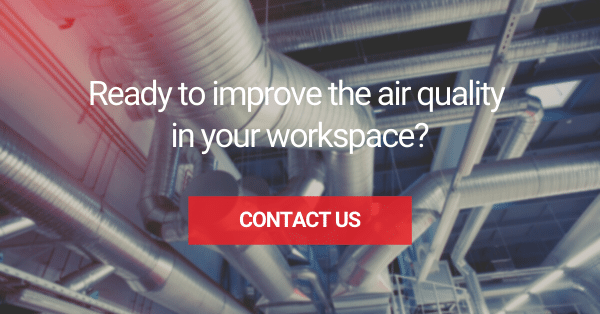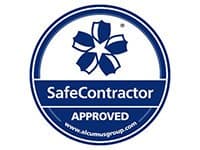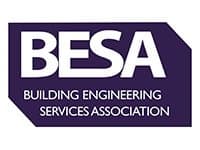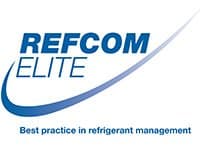What is an Industrial Ventilation System?
Industrial ventilation systems are necessary requirements for the health and safety of workers across many industries. Industrial ventilation can refer to a variety of systems and strategies which are designed to ensure that there is a clean air supply and fresh airflow while removing any contaminants from the air. Generally speaking, your industrial ventilation system should have two main mechanisms – one responsible for removing contaminants from the working environment and the other to bring fresh air back into circulation.
When premises lack proper ventilation, dust and other microscopic matter can become a serious health risk for employees, as when such particles are inhaled, they can cause irritation and lead to long-term lung problems.
There are several factors to consider when designing building and industry-specific industrial ventilation systems. In order to achieve proper dust collection and filtration, the types of contaminants expected must be considered as well as the facility size and layout.
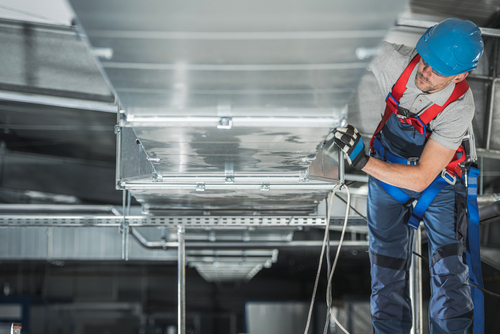
What are different types of Industrial Ventilation Systems?
The two main types of industrial ventilation systems are dilution ventilation and local exhaust ventilation, and they work in the following ways:
Dilution Ventilation
Dilution (mixing) ventilation works, as the name suggests, by diluting contaminated air sources with fresh air supplies. This doesn’t capture and dispose of contaminants but makes sure that the concentration of them remains very low, below a harmful level. Dilution ventilation doesn’t work well when outdoor air is more polluted than indoor air and when the ventilation system is contaminated. Dilution ventilation is also slow to respond to acute exposure situations and it is normally tied to thermal comfort issues.
Local Exhaust Ventilation
Unlike dilution ventilation, local exhaust ventilation works by targeting the source of the contaminants and removing them from the workspace. This type of industrial ventilation system relies on much smaller amounts of air intake and output compared to dilution ventilation. Local exhaust ventilation can be smaller, localised fans that are designed to capture the contaminants and then filter them right at the source. The contaminants are then safely disposed of outside. Local exhaust ventilation systems are usually preferred if:
- Air contaminants pose a serious health risk.
- Large amounts of dust or fumes are generated.
- Increased heating costs from ventilation in cold weather are a concern.
- Emission sources are few in number and near the workers’ breathing zones.
Need a controllable, responsive and effective ventilation system for your industrial building? Call us on 01179 523355 or fill in our contact form to book a free no-obligatory consultation to discuss the best solution for you.
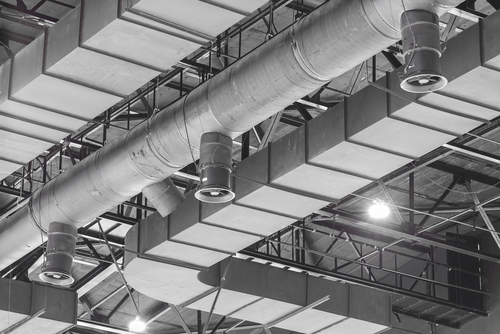
Why You Need Industrial Ventilation
There are four main purposes of a ventilation system in industrial spaces:
- Provide a continuous supply of fresh outside air.
- Maintain temperature and humidity at comfortable levels.
- Reduce potential fire or explosion hazards.
- Remove or dilute airborne contaminants.
Having effective industrial ventilation systems is critical for the health, safety and wellbeing of your employees. It provides them with a continuous supply of fresh, safe air. An industrial ventilation system can also protect your workers from heatstroke while reducing fire or explosion risks and reducing their exposure to airborne contaminants. Some of which can cause long term, life-limiting illnesses and lung problems with high exposure.
Having well-maintained ventilation can also prolong your equipment life span by combatting the dust build-up. Dust build-up can cause serious and often irreparable equipment damage, which can be extremely expensive to replace. The dust can damage circuit boards, harm sensors, and absorb lubrication on mechanical parts causing them to seize and jam. Dust can cause the contamination of machinery when it collects on the machine’s surfaces, as well as the risk of explosion when there is a high concentration in the air. The best way to ensure your machines and equipment are safe and working effectively is by maintaining a well-ventilated environment.
Whilst industrial ventilation systems do require an upfront cost and are an investment, they do pay for themselves over time. The problems that are associated with poor air quality and older systems outweigh the costs of efficient and effective modern industrial ventilation systems. The modern systems are far more efficient and less likely to breakdown than their older counterparts. If you’re worried about the efficacy of your current ventilation systems, it may be worth scheduling an equipment evaluation so we can identify if you may need to update your equipment to safeguard your working environment.
The Impact of Industrial Ventilation on Health and Safety
Health and safety should be of major concern in industrial settings. In order to provide working environments that are safe, efficient and effective, ventilation systems are absolutely necessary. It’s in your best interest for the workforce to work in well-ventilated environments as even in small office settings one sneeze could cause enough airborne particle contaminants for your whole workforce to get sick, which can be disastrous in terms of lost days and weeks of productivity.
Air contaminated with dust and particulate matter are not just a small nuisance or issue for your workforce, as over time overexposure to dust can lead to serious health consequences even if you’ve been wearing the appropriate and recommended personal protective equipment.
Installing industrial ventilation systems are the only sure way to ensure that employees are adequately protected from airborne hazards.
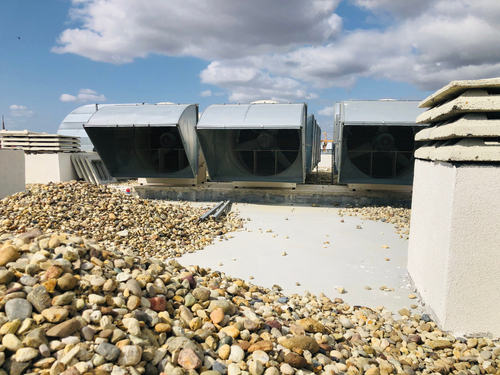
Standards and Regulations
The benefits of maintaining good air quality may save money and increase the productivity of your workforce if they are healthy – but within most industries, it’s also the law. By law all workplaces must comply with providing an adequate supply of fresh air, with sometimes powered general ventilation being required in industrial workshops and similar environments.
Health and Safety England (HSE) recommend that local exhaust ventilation should be used to reduce exposures to dust, mist, fume, vapour and gas in a workplace. These systems should draw the air through a hood or booth away from the worker and be easy to use by the workers.
HSE also notes that there are some common errors when it comes to ventilation such as people overestimating the effectiveness of small hoods, the hoods being too far away from the processes, or not surrounding them enough and inadequate airflow. They also note issues where there is a failure to check that the extraction process is continually working, and an oversight or in consulting workers on the importance of extraction for their health and wellbeing resulting in them not using the systems properly.
Total Environmental Kooling have been designing and installing industrial ventilation systems for industrial buildings for over 20 years. Our wealth of experience means we understand the variety and scope of industrial premises and their requirements. Our expert team is always hands-on to help you through every step of the process. Contact us to learn more about our industrial ventilation systems by contacting our friendly expert team today.


